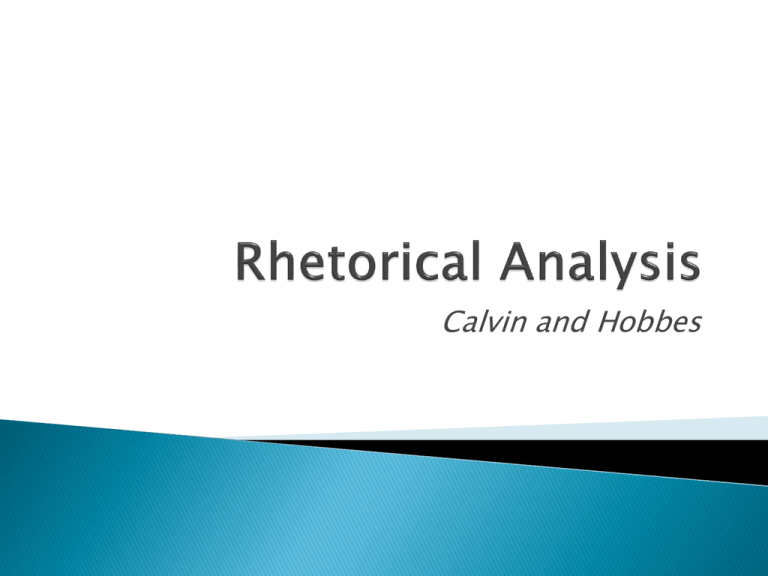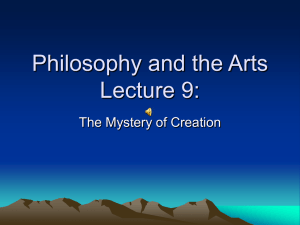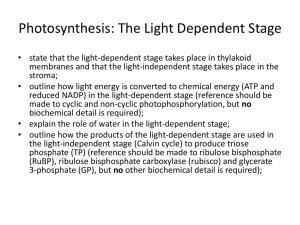Rhetorical Analysis
advertisement

Calvin and Hobbes Not all arguments are explicitly stated. When looking at this comic strip, pay attention to not only what Calvin literally says but what Hobbes implies. This strip has two arguments: the character’s argument (Calvin’s) and the artist’s argument (Hobbes’). Take a minute to write down what you think the arguments are. The artist is using humor to make a point (in this case, through exaggeration). The argument literally stated by the characters are rarely the artist’s actual argument. The artist often leaves visual clues hinting at his or her true argument: ◦ ◦ ◦ ◦ Background details Foreground details Character expressions Etc. When breaking down any argument, it helps to move from big picture things to small picture things. Big Picture Analysis ◦ What the characters are saying (claim) ◦ What the characters aren’t saying (claim) ◦ Why the characters are saying what they are (reasons/foundations) Small Picture Analysis ◦ What foreground details did the artist include? ◦ What background details did the artist include? ◦ What kinds of facial expressions did the artist use on his or her characters? ◦ How did the characters say what they did? Take a minute to look at your ideas about the arguments. ◦ Have they changed any? ◦ Can you add anything to them? ◦ Remove/change anything? Let’s look at the big picture analysis of the Calvin and Hobbes comic strip… What is Calvin claiming? We should always have high self-esteem, so we should lower our expectations so we can always meet them. What are some of the reasons behind this claim? Some potential reasons: ◦ Expecting too much of ourselves damages our selfesteem. ◦ Expecting mediocrity means that any time we go above that standard, we receive higher self-esteem. ◦ Why put in more effort than strictly necessary? Some potential foundations: ◦ Expecting too much of ourselves damages our selfesteem …because, if we fail to achieve our high goals, we don’t feel good about ourselves. Some potential foundations: ◦ Expecting mediocrity means that any time we meet or exceed that standard, we receive higher selfesteem. …because mediocrity means everyone succeeds. Some potential foundations: ◦ Why put in more effort than strictly necessary …because if something is good enough, there’s no reason to continue. Keep in mind that this is the literal argument in this comic strip. Now, let’s dig a little deeper and see what the artist’s real claim is. Spend a minute thinking about what the artist is really trying to say in this comic strip. Encouraging mediocrity for the sake of an inflated self-esteem is not good for the country. What indicates that this is the artist’s main claim? Think on this for a minute and discuss it with your neighbor. Signs of the Artist’s True Argument: ◦ Hobbes’ counterstatements ◦ The incomplete snowman ◦ The exaggerated emphasis on Calvin’s argument What are Hobbes’/the artist’s reasons for his claim? Potential Reasons: ◦ Mediocrity does not produce the kind of innovation a country needs to remain competitive. ◦ Mediocrity is bad for business. Potential Foundations: ◦ Mediocrity does not produce the kind of innovation a country needs to remain competitive. …because innovation, particularly technological innovation, is vital to many of our industries. …because non-innovative countries fall behind innovative ones. …etc. Potential Foundations: ◦ Mediocrity is bad for business . …because businesses which can’t keep us with customer demand go out of business. …because mediocre employees lead to mediocre products and services. …etc. Things to observe: ◦ The unfinished snowman ◦ Calvin’s apparent pride in his unfinished snowman ◦ Hobbes’ less than enthusiastic expression in the last box Things to observe: ◦ The way that Calvin connects homework to selfesteem ◦ Hobbes’ counterarguments His negative interpretation of Calvin’s statements Hobbes saying, “Remind me to invest overseas.” There are many potential reasons and foundations behind a claim, so it can be hard to tell at times why an author/artist claimed what he or she did. That said, however, we can still get a pretty good idea with thorough enough analysis. Arguments are not always straightforward. Also, arguments are often supported by unstated reasoning. When analyzing an argument, like analyzing sources, start with big picture items (what was being said) and move to smaller picture items (how things were being said). Thoroughly analyzing an argument takes time and requires a lot of attention to detail. Analyzing arguments, like analyzing sources, is impacted by your own personality, background, biases, etc. That said, however, it is possible to get the gist of a claim and its reasons and foundations.









